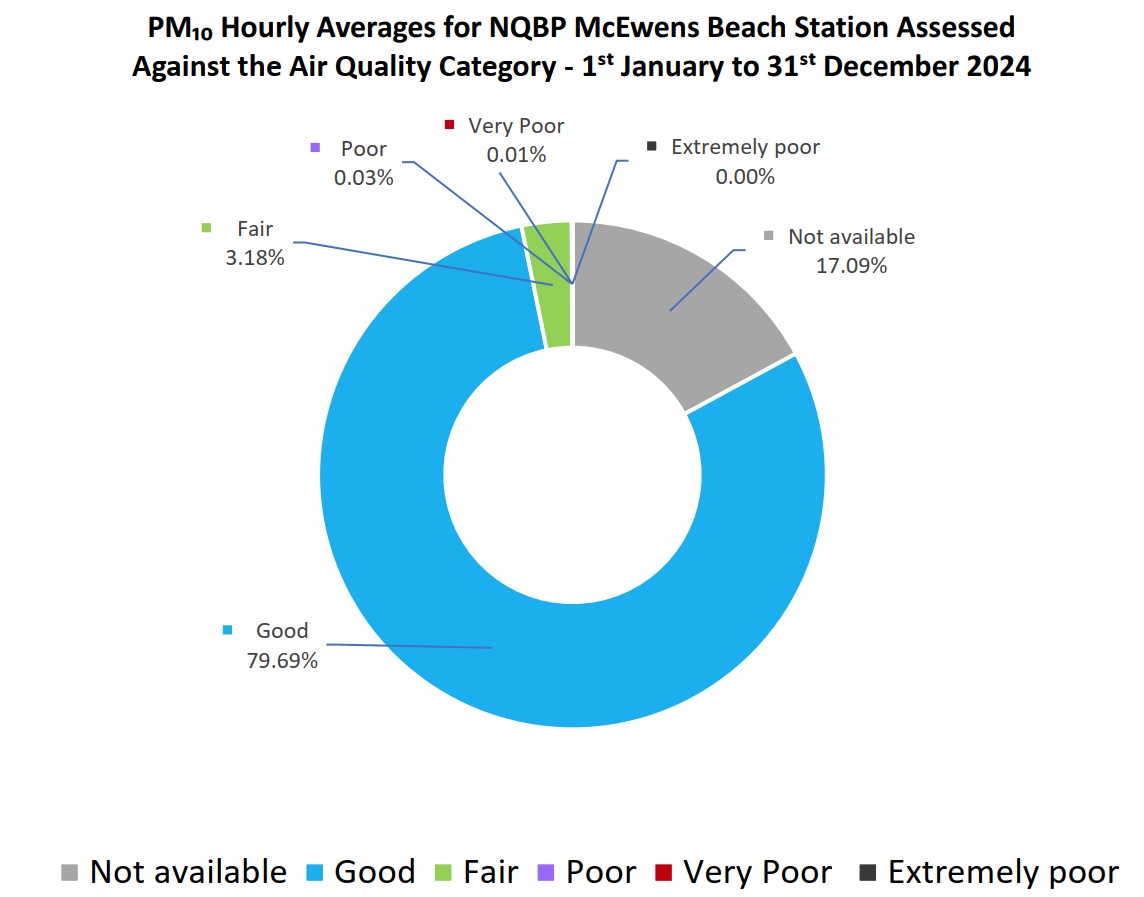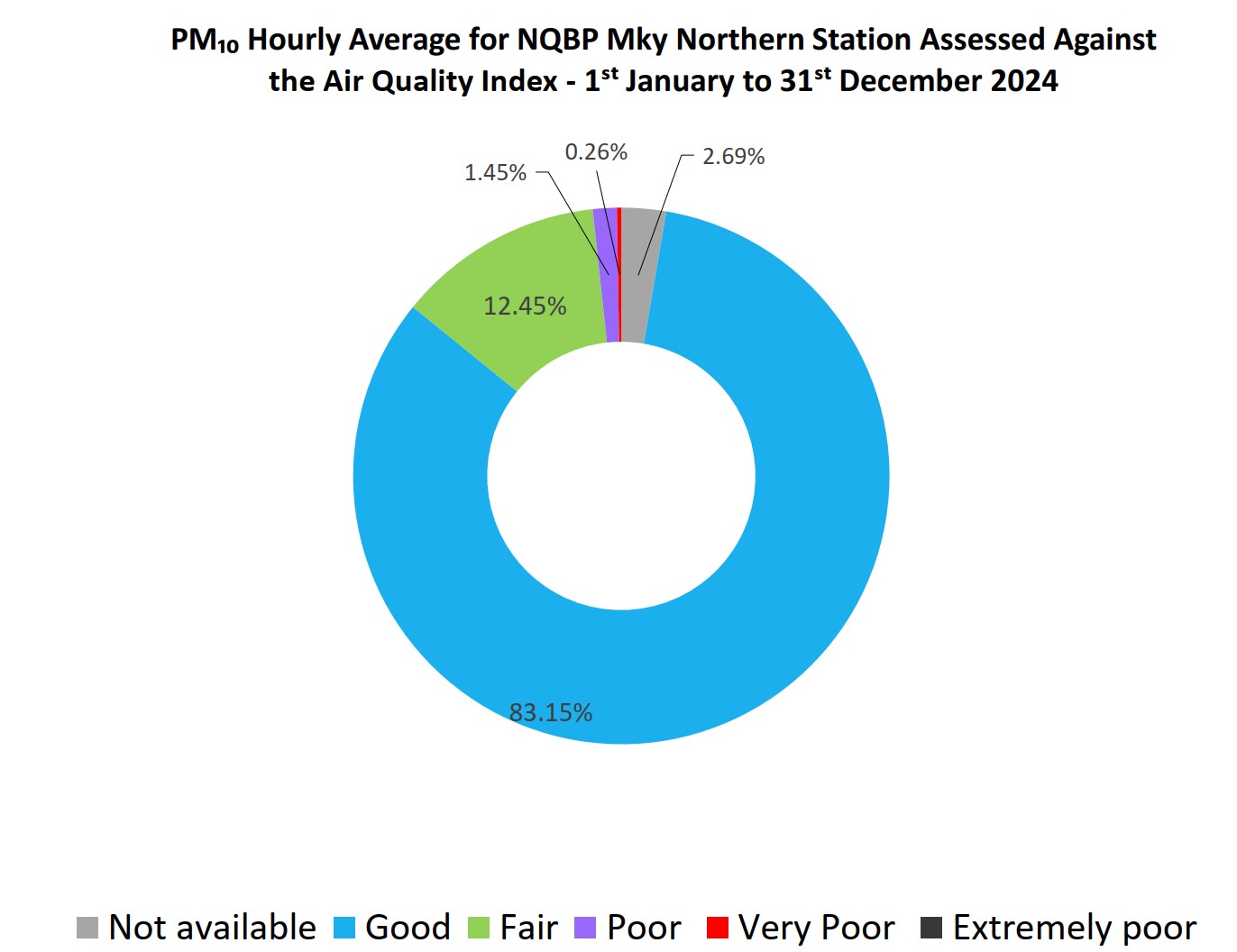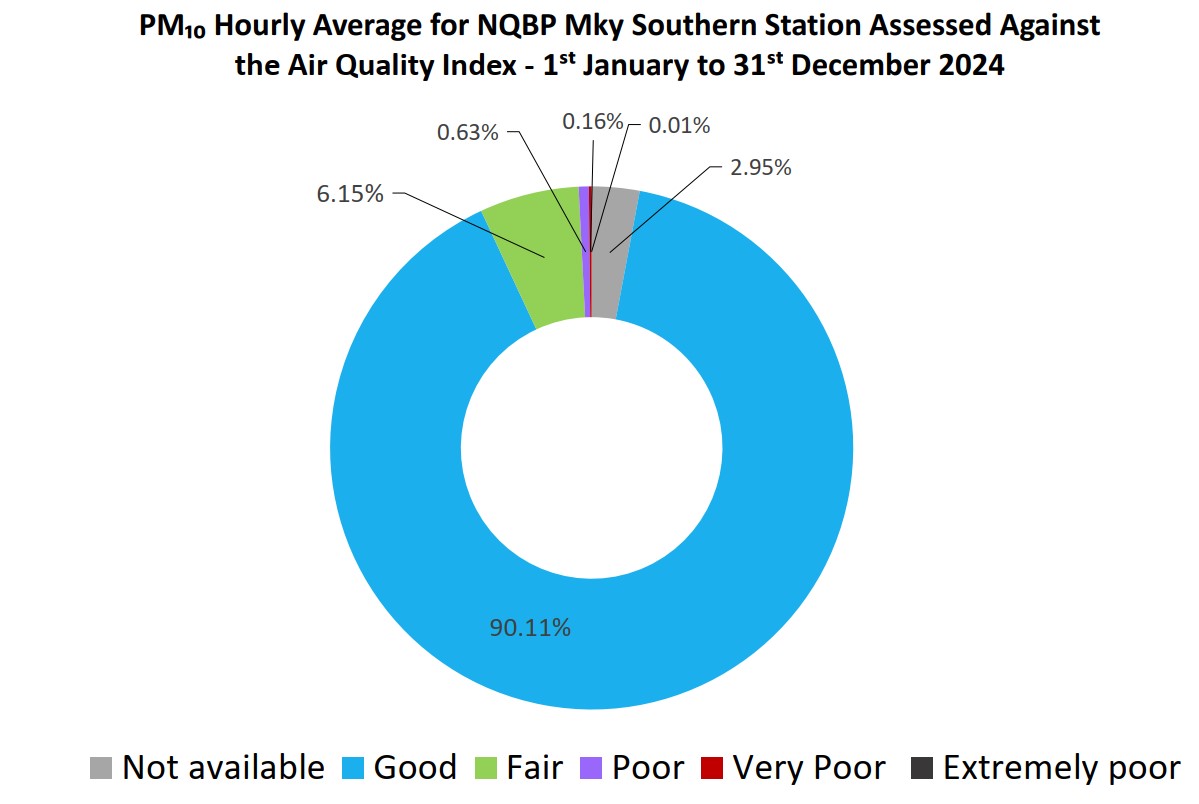Air quality monitoring
We have a long-term commitment to monitoring air quality around our ports. Where possible, we also provide this information in real-time to our port communities.
-
At McEwens Beach we measure PM10 which are finer airborne particles invisible to the naked eye.
Monitoring LocationsHay PointDust Measurements-
Hourly mean as at
- Good
- Fair
- Poor
- Very poor
- Extremely poor
µg/m3 *Air NEPM 24hr mean guideline: 50 μg/m3* Learn about the Qld Gov air quality categories
Wind Conditionskm/hrStronger winds can lead to elevated dust levels. Wind speed descriptions use the Beaufort Wind Scale.
About the dataThe dust measurements shown above use unvalidated data, updated as per the time period indicated above the dial. We voluntarily make available this information as a useful tool for our port communities; however, it’s important to remember that the dust measurements shown may change when validated and should not be relied upon as final.
The graphs below show validated data for the most recent calendar year. All dust data shown is provided by a third-party firm, ACOEM, who manage NQBP’s dust monitoring activities at the sites of McEwens Beach, Mackay northern and southern stations. Wind and weather information is provided by Bureau of Meteorology.
Annual
 validated data
validated dataIn 2024, PM10 level of "good" was recorded for 79.69% of the year at our McEwens Beach site.
Data shown 01/01/2024-31/12/2024.
You can also download our hourly validated readings for 2024.
Sites are maintained regularly and periods of time where data is unavailable may reflect these maintenance works.
The McEwens Beach air quality monitoring program began mid-2013.
-
-
At our Mackay northern station we measure PM10, which are finer airborne particles invisible to the naked eye.
Monitoring LocationsHay PointDust Measurements-
Hourly mean as at
- Good
- Fair
- Poor
- Very poor
- Extremely poor
µg/m3 *Air NEPM 24hr mean guideline: 50 μg/m3* Learn about the Qld Gov air quality categories
Wind Conditionskm/hrStronger winds can lead to elevated dust levels. Wind speed descriptions use the Beaufort Wind Scale.
About the dataThe dust measurements shown above use unvalidated data, updated as per the time period indicated above the dial. We voluntarily make available this information as a useful tool for our port communities; however, it’s important to remember that the dust measurements shown may change when validated and should not be relied upon as final. The graphs below show validated data for the most recent calendar year. All dust data shown is provided by a third-party firm, Ecotech, who manage NQBP’s dust monitoring activities at the sites of McEwens Beach, Mackay northern and middle breakwaters. Wind and weather information is provided by Bureau of Meteorology.

Annual Validated data
In 2024, a level of "good" was recorded for 83.15% of the year at Mackay's northern station.
Data shown 01/01/2024-31/12/2024.
You can also download our hourly validated readings for all of 2024.
Sites are maintained regularly and short periods of time where data is unavailable may reflect these maintenance works.
The Mackay air quality monitoring program began mid-2016.
-
-
At our Mackay southern station we measure PM10, which are finer airborne particles invisible to the naked eye.
Monitoring LocationsHay PointDust Measurements-
Hourly mean as at
- Good
- Fair
- Poor
- Very poor
- Extremely poor
µg/m3 *Air NEPM 24hr mean guideline: 50 μg/m3* Learn about the Qld Gov air quality categories
Wind Conditionskm/hrStronger winds can lead to elevated dust levels. Wind speed descriptions use the Beaufort Wind Scale.
About the dataThe dust measurements shown above use unvalidated data, updated as per the time period indicated above the dial. We voluntarily make available this information as a useful tool for our port communities; however, it’s important to remember that the dust measurements shown may change when validated and should not be relied upon as final. The graphs below show validated data for the most recent calendar year. All dust data shown is provided by a third-party firm, Ecotech, who manage NQBP’s dust monitoring activities at the sites of McEwens Beach, Mackay northern and middle breakwaters. Wind and weather information is provided by Bureau of Meteorology.
Annual Validated data
In 2024, a level of "good" was recorded for 90.11% of the year at Mackay's southern site.
Data shown 01/01/2024-31/12/2024.
You can also download our hourly validated readings for all of 2024.
Sites are maintained regularly and short periods of time where data is unavailable may reflect these maintenance works.
The Mackay air quality monitoring program began mid-2016.
-
